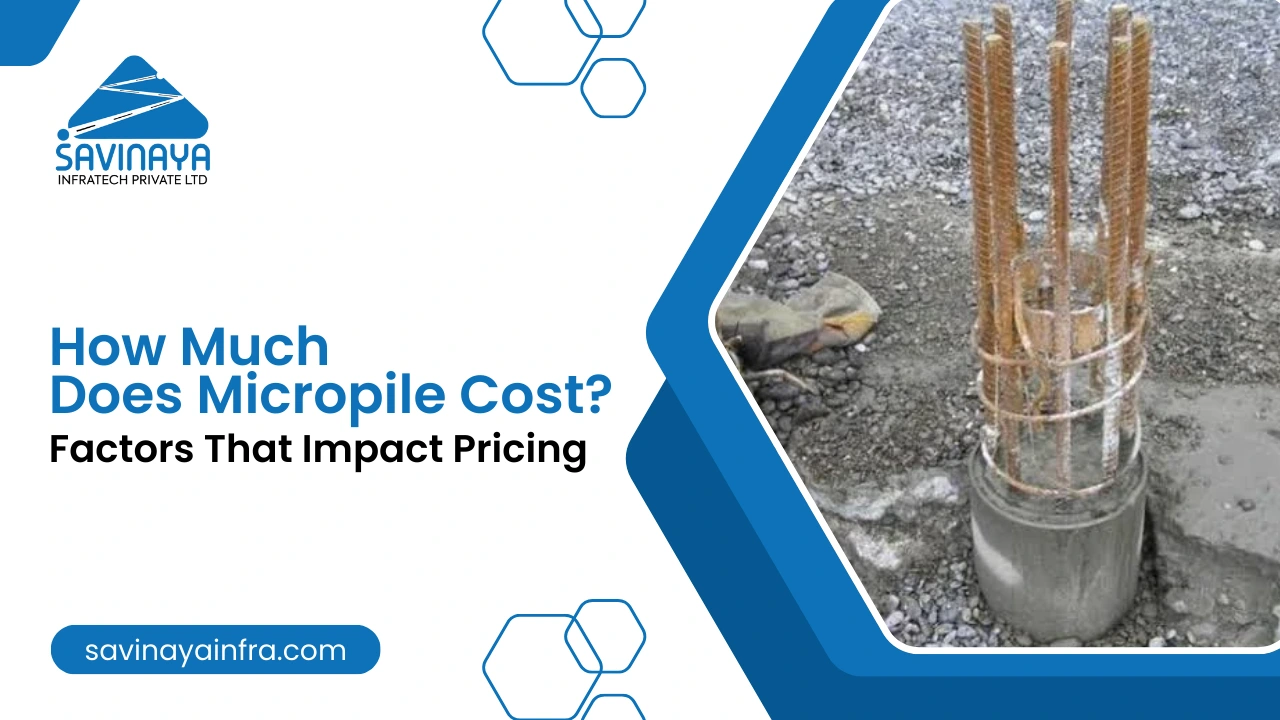The field of geotechnical engineering offers numerous techniques to stabilize and strengthen soil, especially in slopes, retaining walls, and excavations. Among these methods, soil nailing and ground anchors are two popular techniques used for ground improvement and stabilization. While they may seem similar at first glance, their mechanisms, applications, and installation processes are distinct.
This blog shares insights about these differences, highlighting their unique characteristics and benefits.
Table of Contents
Overview of Soil Nailing?
Soil nailing is a stabilisation technique that involves the installation of slender, reinforcing elements into the soil mass. These elements, known as soil nails, are typically made of steel bars or rods that are grouted into pre-drilled holes. The technique is primarily used to stabilize slopes, excavations, and retaining walls by enhancing the shear strength of the soil.
The Soil Nailing Technique in Detail
The soil nailing technique is particularly effective for loose or unstable soils and is widely used in urban construction projects where space is limited.
- Drilling: Holes are drilled into the soil at specific intervals and angles.
- Insertion: Steel bars or rods are inserted into the drilled holes.
- Grouting: A cementitious grout is injected into the holes to bond the soil nails with the surrounding soil.
- Facing: A protective layer, often shotcrete, is applied to the surface for additional stability.
What are Ground Anchors?
Ground anchors, also known as tiebacks, are tension-resisting elements designed to transfer loads from structures, such as retaining walls or foundations, into stable ground layers. Unlike soil nails, which reinforce the soil mass, ground anchors primarily resist external forces by anchoring into a firm stratum, such as bedrock.
Types of Ground Anchors
There are several ground anchor types, including:
- Grouted anchors: These are installed by drilling holes and injecting grout to secure the anchor.
- Mechanical anchors: These rely on mechanical components to grip the soil or rock.
- Driven anchors: These are driven into the ground without pre-drilling.
The choice of ground anchor depends on the soil conditions, structural requirements, and project specifications.
What Are The Differences Between Soil Nailing and Ground Anchors?
Although both techniques involve the insertion of reinforcing elements into the ground, their objectives and applications differ significantly.
1. Functionality
- Soil nailing: Works to reinforce and stabilize the soil mass by increasing its shear strength.
- Ground anchors: Provide resistance to external forces, such as lateral loads from retaining walls or uplift forces on foundations.
2. Orientation and Force Distribution
- Soil nails: Typically installed at shallow angles and are subjected to tensile forces as the soil mass moves.
- Ground anchors: Installed at steeper angles and are pre-tensioned to resist external forces actively.
3. Applications
- Soil nailing in ground improvement techniques is common for stabilizing slopes, temporary excavations, and retaining walls in urban settings.
- Ground anchors are often used for large-scale infrastructure projects, such as bridge abutments, dams, and tall retaining structures.
4. Installation Process
- Soil nails: Require pre-drilling, grouting, and sometimes shotcrete facing.
- Ground anchors: Involve pre-tensioning and may require sophisticated equipment to achieve the desired load capacity.
Advantages of Soil Nailing
- Cost-Effective: Since soil nailing contractors use relatively simple equipment, it is often a more economical option than other stabilization methods.
- Quick Installation: The process is straightforward and can be completed quickly, making it ideal for time-sensitive projects.
- Flexibility: This can be adapted to various soil conditions and is particularly useful for retrofitting existing structures.
Advantages of Ground Anchors
- High Load Capacity: Ground anchors can resist significant forces, making them suitable for large-scale structures.
- Durability: Designed for long-term applications, they offer excellent performance even in challenging environments.
- Versatility: With different ground anchor types available, they can be tailored to suit various soil and rock conditions.
Applications of Grouted Soil Nailing
Grouted soil nails are particularly effective in stabilizing loose soils and are widely used in infrastructure projects such as highway embankments and building excavations.
Challenges and Limitations
Soil Nailing
- Not suitable for highly cohesive or rocky soils.
- Requires careful monitoring to ensure proper alignment and grout coverage.
Ground Anchors
- Higher initial cost due to the use of specialized equipment and materials.
- Installation may require access to deeper, more stable ground layers, which can be challenging in certain environments.
Tips to Choose the Right Technique
When deciding between soil nailing and ground anchors, it is important to consider:
- Soil Conditions: Loose soils are better suited for soil nailing, while ground anchors are more effective in firm or rocky strata.
- Project Requirements: For projects requiring high load resistance, ground anchors are the preferred choice.
- Budget and Timeline: Soil nailing is generally more cost-effective and faster to implement.
How Savinaya Infratech Can Help Your Projects?
Savinaya Infra specializes in delivering advanced solutions for ground stabilization, offering expertise in soil nailing techniques and a range of ground anchor types. Our experienced soil-nailing contractors work with precision and dedication to ensure every project achieves long-lasting and reliable results.
From stabilizing slopes to strengthening retaining walls and managing complex excavations, we provide customized strategies tailored to your project’s unique requirements. With a strong focus on safety, quality, and efficiency, Savinaya Infra is committed to helping you achieve optimal ground stability and project success.
Get in touch with us today and speak to our experts about how we can support your goals.
Recommended Reads
What is Soil Stabilisation and Why Is It Important?
Top 4 Soil Stabilization Techniques in India
RS Wall Repair Techniques: A Comprehensive Guide
Conclusion
Both soil nailing and ground anchors play vital roles in modern geotechnical engineering. While soil nailing focuses on reinforcing the soil mass and improving its shear strength, ground anchors resist external forces and ensure the stability of large structures. Understanding their differences, applications, and advantages will help you choose the right technique for your project.


